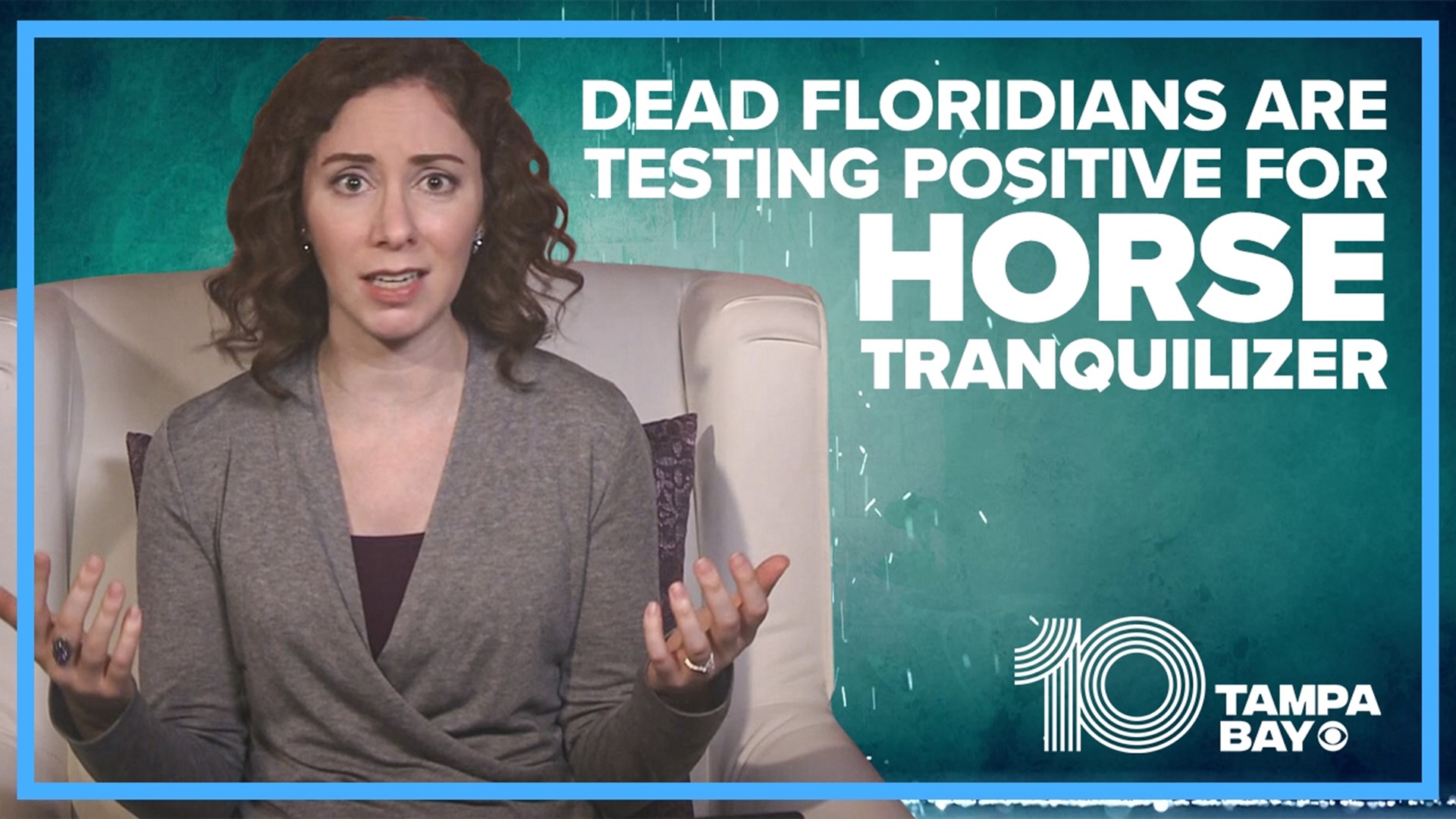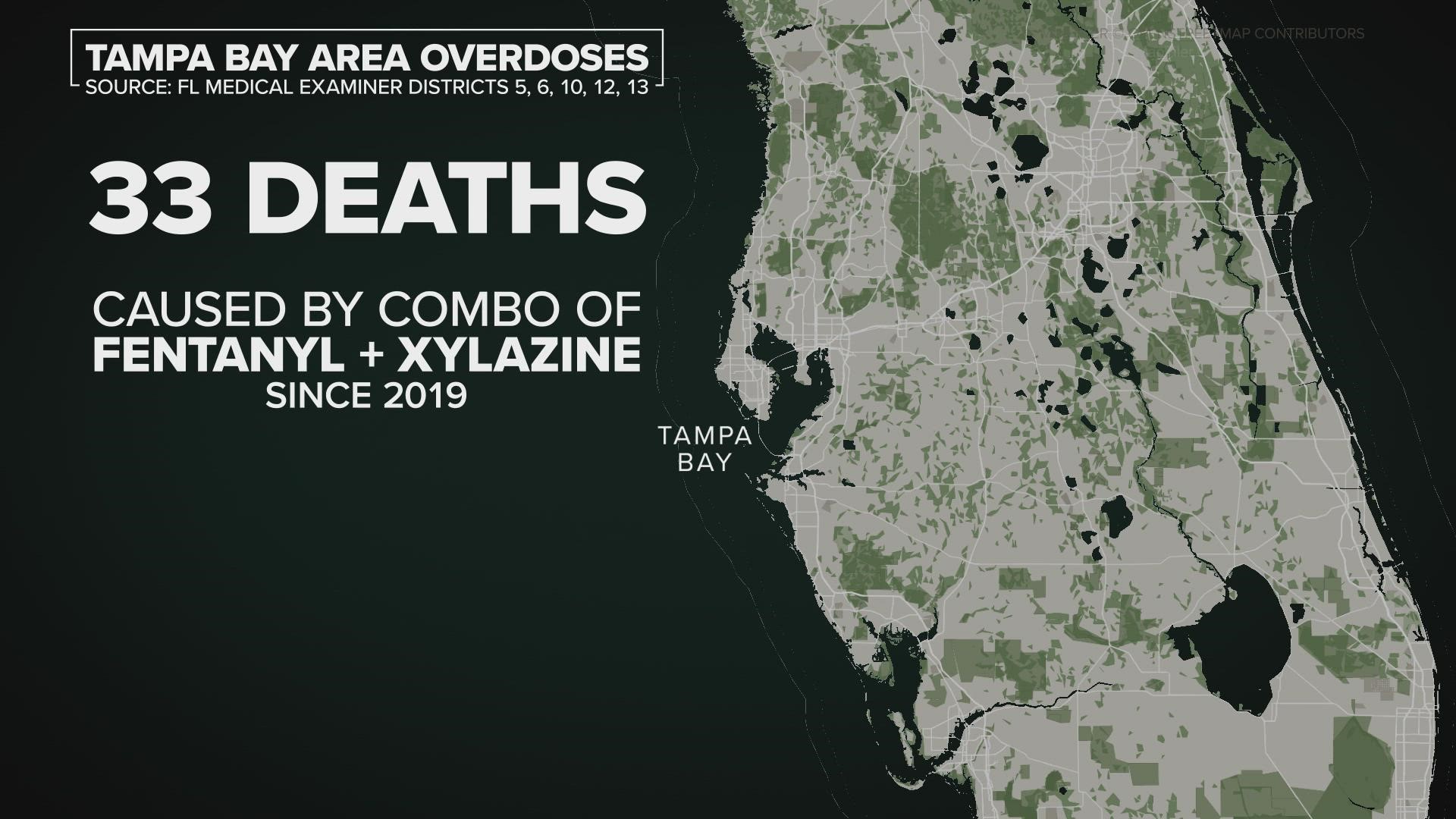Hundreds of Floridians have tested positive for horse tranquilizer after death
Data shows that a combination of fentanyl and an animal tranquilizer called xylazine has been quietly killing people in the Tampa Bay area for years.
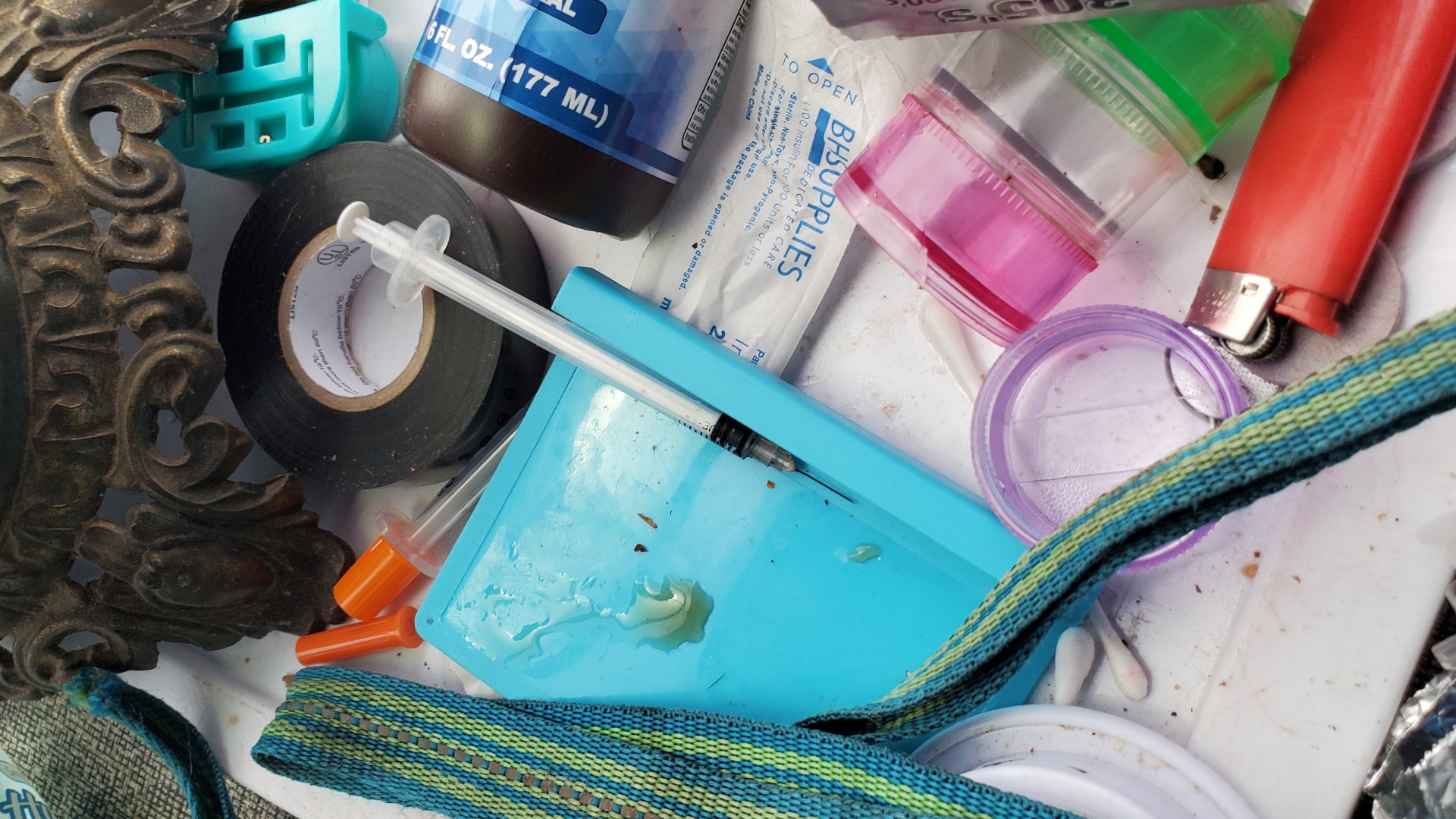
A short walk from the beach, Cody Heilig took his last breath inside a Gulfport shed in May 2020.
“I was scared, shocked. I didn’t know what to do,” said Heilig’s mother, Kim Seidel.
Heilig’s family said they thought he had stopped using drugs. They thought he was healthy. So, they were heartbroken to learn he died from a drug overdose.
“I love all of my children, all my grandchildren. No matter what they do, whether it’s right or wrong, I still love them,” said Heilig’s grandmother, Dolores Wiese.
But there was something about Heilig’s death that his family didn’t know until 10 Investigates called them.
He had an animal tranquilizer in his system when he died: xylazine. It’s a veterinary sedative mostly used in large animals like horses and cattle.
“I actually had to Google it after I was contacted about this interview,” Seidel said. “I never saw the autopsy results from it.”

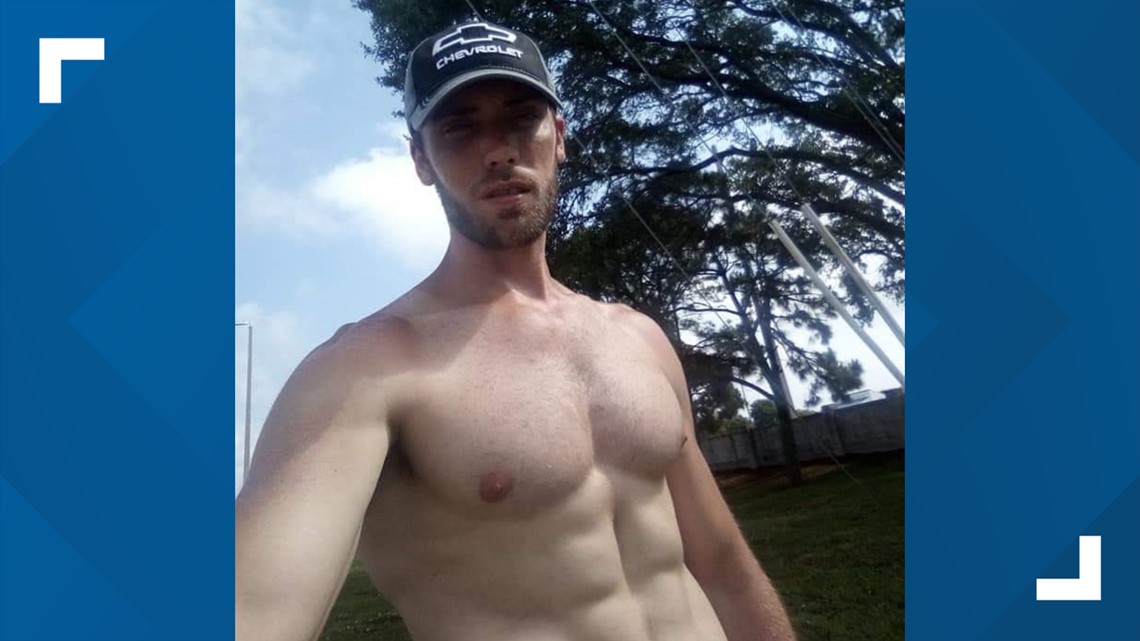
That autopsy says her son’s cause of death was fentanyl and xylazine toxicity.
“I think people need to know about it,” Seidel said.
Xylazine overdoses have been happening for years "It’s a medication that’s for animal use only."
Cody Heilig’s death wasn’t an isolated situation.
10 Investigates uncovered people have been overdosing on a combination of fentanyl and xylazine in the Tampa Bay area for years.
In July, Tampa Fire Rescue and Police were called out to 34th Street North and Osborne Avenue in the Jackson Heights neighborhood. The police report claims seven people were overdosing on the ground; all of them were struggling to breathe and some were unconscious.
First responders gave them the opioid overdose reversal medication Narcan.
Police claim that one man who was overdosing later told investigators that he thought they were buying cocaine, but the white powder officers say they found out there in plastic baggies tested positive for fentanyl and xylazine, not coke.
All seven people survived. Not everyone is that lucky.
In February, the Pasco Sheriff’s Office found used syringes and Narcan near a man’s body in Hudson.
The medical examiner later found he died from an overdose on fentanyl, xylazine and other drugs.

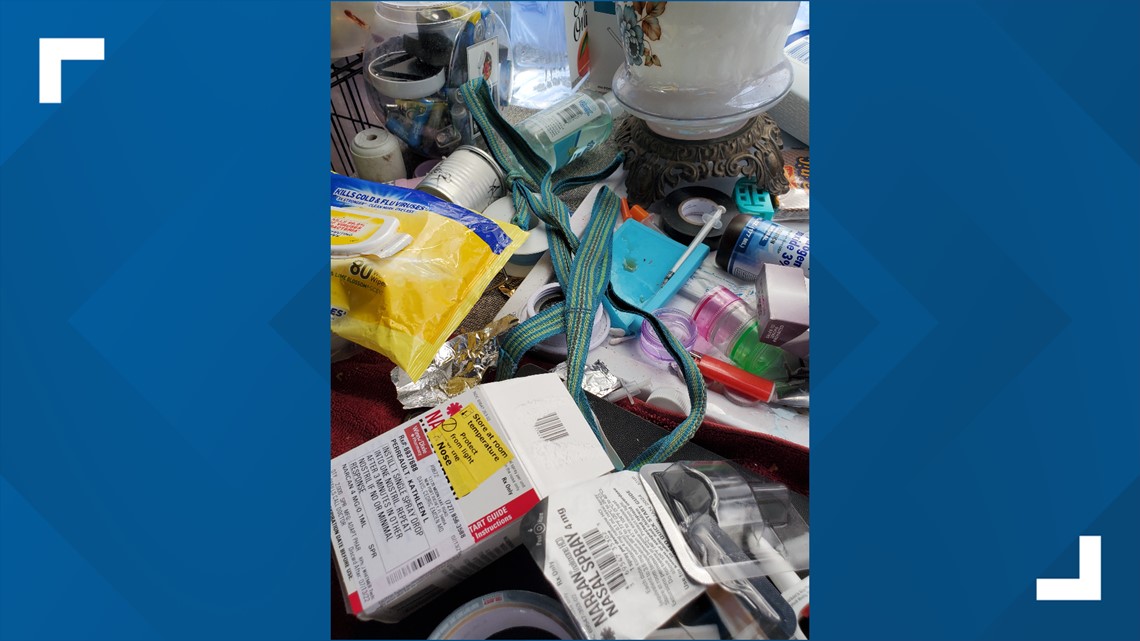
At the UF Health Medical Lab in Gainesville, Chief of Forensic Medicine Dr. Bruce Goldberger and his team work with five Florida medical examiners to test fluids and tissues from people who die.
A forensic toxicologist, Goldberger’s expertise is measuring drugs and other substances in decedents and interpreting those findings.
“There is absolutely no reason for a decedent to have xylazine in their blood or other fluids and tissues. It’s a medication that’s for animal use only,” Goldberger said.

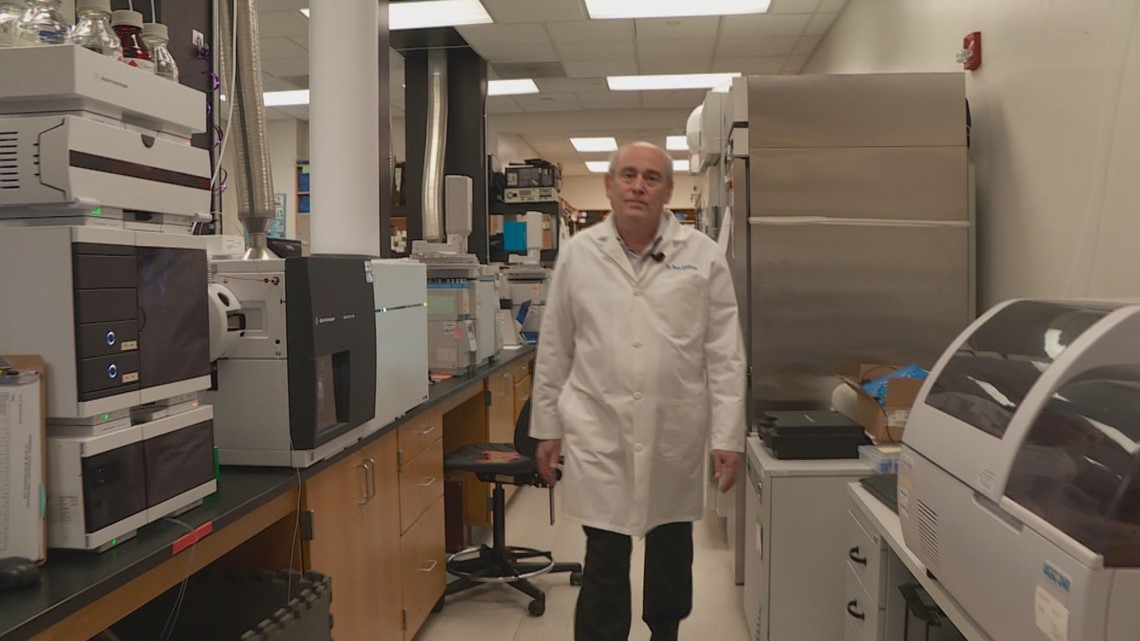
People don't always know drugs have xylazine Xylazine gives fentanyl "legs."
Street drugs containing xylazine are sometimes sold under the names tranq, tranq dope, sleep-cut, Philly dope and zombie drug.
But, as we saw in that mass overdose in Tampa, people don’t always know their drugs have been cut with xylazine.
People who don’t overdose might just think they got “the good stuff.”
Researchers have talked to users who reported that xylazine gives fentanyl “legs” – in other words, the feelings of euphoria people get from fentanyl last longer.
Gulfport police claim they found texts to a known gang member on Cody Heilig’s phone two days before his death saying, “That stuff is good” and “I need more heroin” in Spanish – messages that could indicate he didn’t know what drugs he was actually getting.
According to the CDC, when xylazine is combined with opioids, it increases the risk of fatal overdose because it can cause slowed heart rate, low blood pressure, and slow, ineffective breathing.
“It’s pretty sad. Because people have absolutely no idea what they are ingesting and what the potential outcome could be,” Goldberger said.
Xylazine has been creeping into Florida's fentanyl At least 236 Floridians died with xylazine in their systems last year.
In an August report, researchers at Yale wrote that xylazine first started popping up in Puerto Rico in 2001. In the past few years, it’s started showing up in toxicology reports in the states, especially in the Northeast.
The CDC released a report saying xylazine was identified in people who died from overdoses in 25 of the 38 states that were examined in 2019. They found fentanyl or its analogs – chemicals that mimic fentanyl – were listed as a cause of death in 99 percent of xylazine-involved deaths.
10 Investigates has compiled toxicology results showing xylazine has been quietly creeping into the fentanyl supply in Florida over the past few years.
Florida Medical Examiners Commission data made public in early December show that at least 236 people died with xylazine in their systems last year.
All but one of the Floridians who died with xylazine in their bodies also tested positive for fentanyl, fentanyl analogs, or heroin.
But the reality is there are probably many more Floridians dying with fentanyl in their systems than what’s reflected in that data because the commission didn’t even ask medical examiners to report xylazine in 2021.
That was all voluntarily reported.
The commission didn’t start requiring medical examiners to report xylazine until 2022, a change that Goldberger pushed for.
It could be another year before the 2022 data is made public.
County-by-county xylazine deaths At least 33 people have died from a combination of fentanyl and xylazine in the Tampa Bay area since 2019.
Knowing those limitations, 10 Investigates tallied up the deaths reported county-by-county.
We found that 79 of the 236 people who died with xylazine in their bodies died in the Tampa Bay area.
That means one in three deaths happened here, mostly in Sarasota, Manatee and Polk counties.

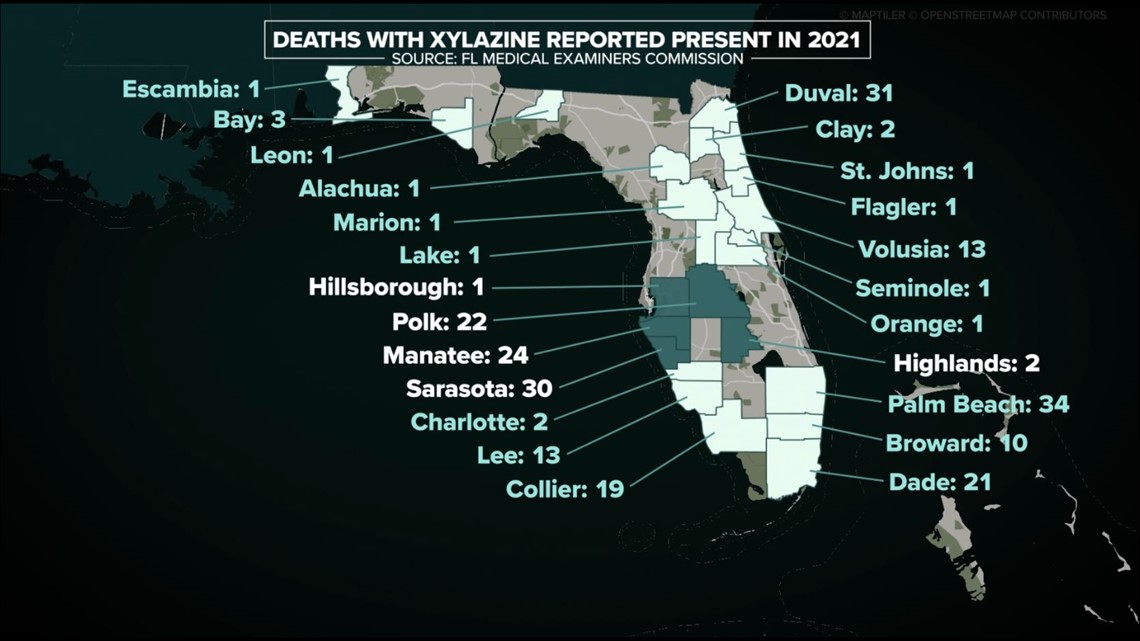
But we wanted to know how many people in the Tampa Bay area have been dying because of xylazine and fentanyl, not just dying while those substances were in their systems.
So, we reached out directly to medical examiners for all 10 of our counties, asked them for data on people whose cause of death included both xylazine and fentanyl from 2019 until now, and created our own database.
We found at least 33 people have died from a combination of fentanyl and xylazine in the Tampa Bay area since 2019: 12 people in Polk County, eight in Manatee, seven in Sarasota, three in Highlands, one in Pasco, one in Pinellas, and one in Citrus.
Hardee, Hernando and Hillsborough Counties reported no deaths caused by xylazine and fentanyl.
“As the drugs emerge in Florida, we have to modify our procedures so we can identify, routinely, these drugs. While maybe a year or two ago, we didn’t do a great job with xylazine, but right now, we screen every fentanyl overdose case for xylazine,” Goldberger said.
Xylazine is resistant to Narcan Naloxone doesn’t work on xylazine because xylazine is not an opioid.
The go-to overdose reversal medication for opioids like fentanyl is something you’ve probably heard of by now: naloxone, better known by the brand name Narcan.
The problem is that naloxone doesn’t work on xylazine because xylazine is not an opioid.
“So, if someone is overdosing due to fentanyl and xylazine, the Narcan will only mitigate the effects of the fentanyl and not the xylazine,” Goldberger explained. “In practice, it makes the treatment and the saving of lives more difficult.”
When paramedics like Tampa Fire Rescue’s Tim Burnham show up to treat a person who’s overdosing, they don’t know for sure what drugs that person has taken.
“When you see that the Narcan’s not working, then we go to the next best thing: OK, how do I manage his airway? How do I make sure that the circulatory system stays in homeostasis? What are the things that I need to do to keep him from going into cardiac arrest?” Burnham said.
Paramedics don’t know for sure if someone has xylazine in their system or not.
“We don’t have toxicology in the field when we have medics go out on the calls, so we kind of look at signs and symptoms for any overdose,” said Tampa Fire Rescue Division Chief Chris Shipp. “Our paramedics do not know what they’re going to run across, what drug has this patient taken – or person taken? And did they mix it with several others?”
How is xylazine getting into the state? "Anyone who thinks that can't happen to them, they don't have a clue."
The only way to legally get xylazine is with a veterinary prescription.
So, how is it getting mixed into the street fentanyl supply?

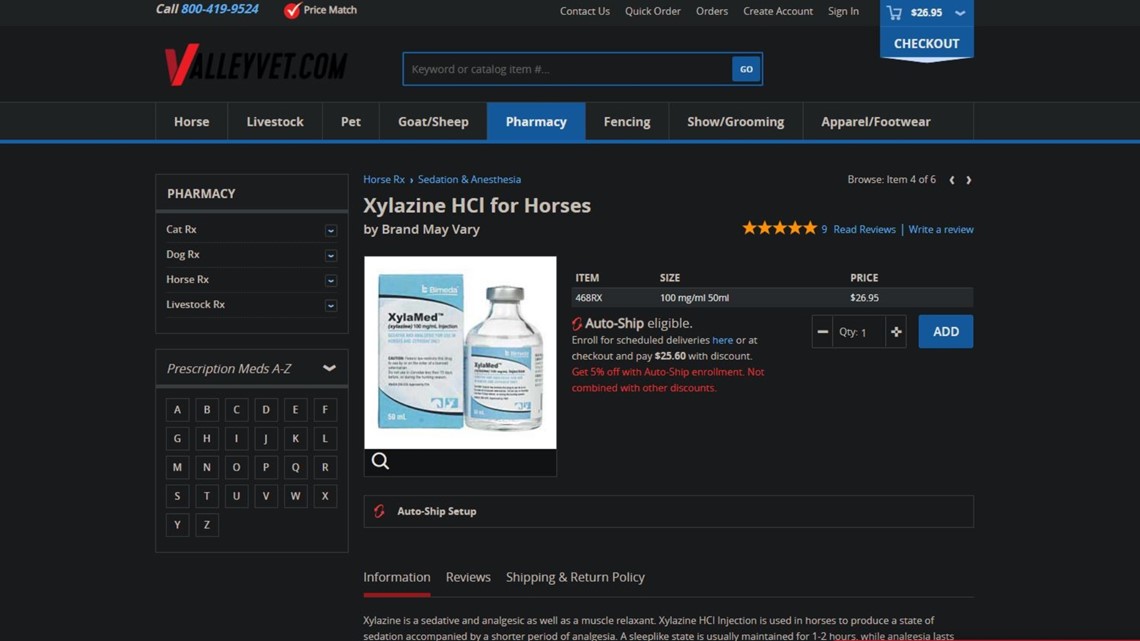
10 Investigates asked the Food and Drug Administration, and they tell us they don’t know whether xylazine is being diverted from the animal drug supply or if it’s being illicitly produced.
Last month, the FDA sent out alerts about xylazine, including its interference with naloxone and the risk of severe “necrotic skin ulcerations.”
Those are skin wounds where the tissue dies.
They’re really tough to look at, but if you do need to see what these wounds look like, you can see some examples here.

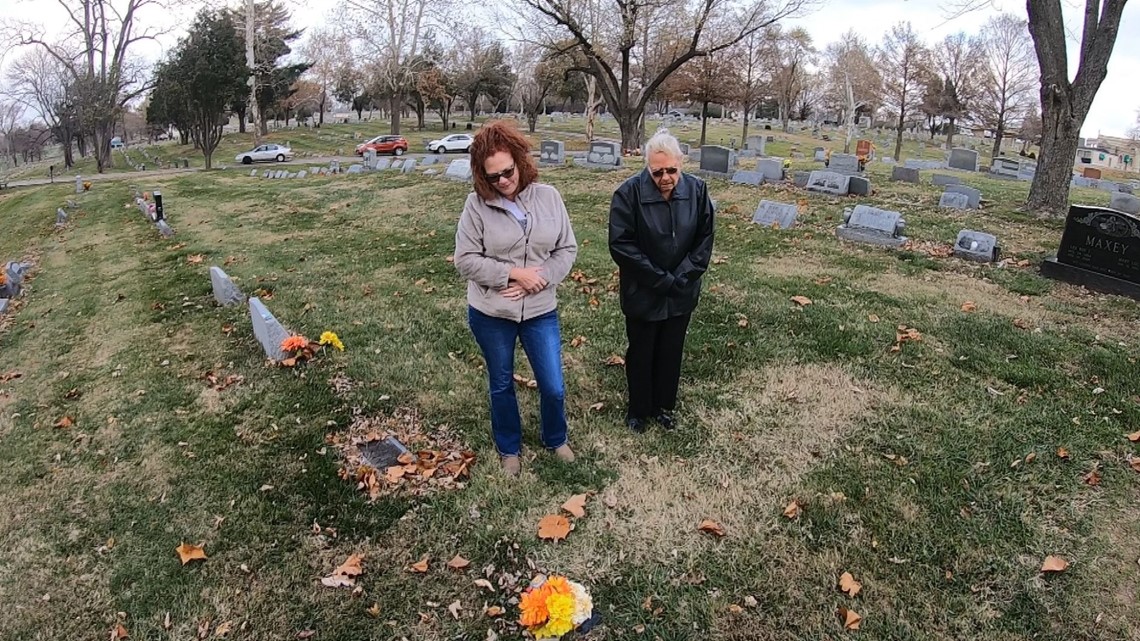
Even though this story won’t bring Cody Heilig back, his family hopes it’s a wake-up call that could prevent another family from going through the same pain.
“Anyone who thinks that can’t happen to them, they don’t have a clue. It can and it does,” Seidel said. “I miss him. Don’t ever get to hug him again or anything. Just, he’s gone.”
Even though naloxone doesn’t affect xylazine, experts stress it’s still a good idea to have it around in case of an opioid overdose.
Here’s where you can find naloxone near you.
You can also see 10 Tampa Bay’s special series “Overdosed,” streaming now on YouTube. This series explores possible solutions like drug testing strips, safe places to use, and tougher prosecution for those who deal deadly drugs. You can also check out resources to get help.
Six people from across the Tampa Bay area shared how fentanyl has impacted their lives in our roundtable, Faces of Fentanyl.
We also have a digital exclusive interview with the DEA in Tampa streaming now on YouTube and 10 Tampa Bay+.


